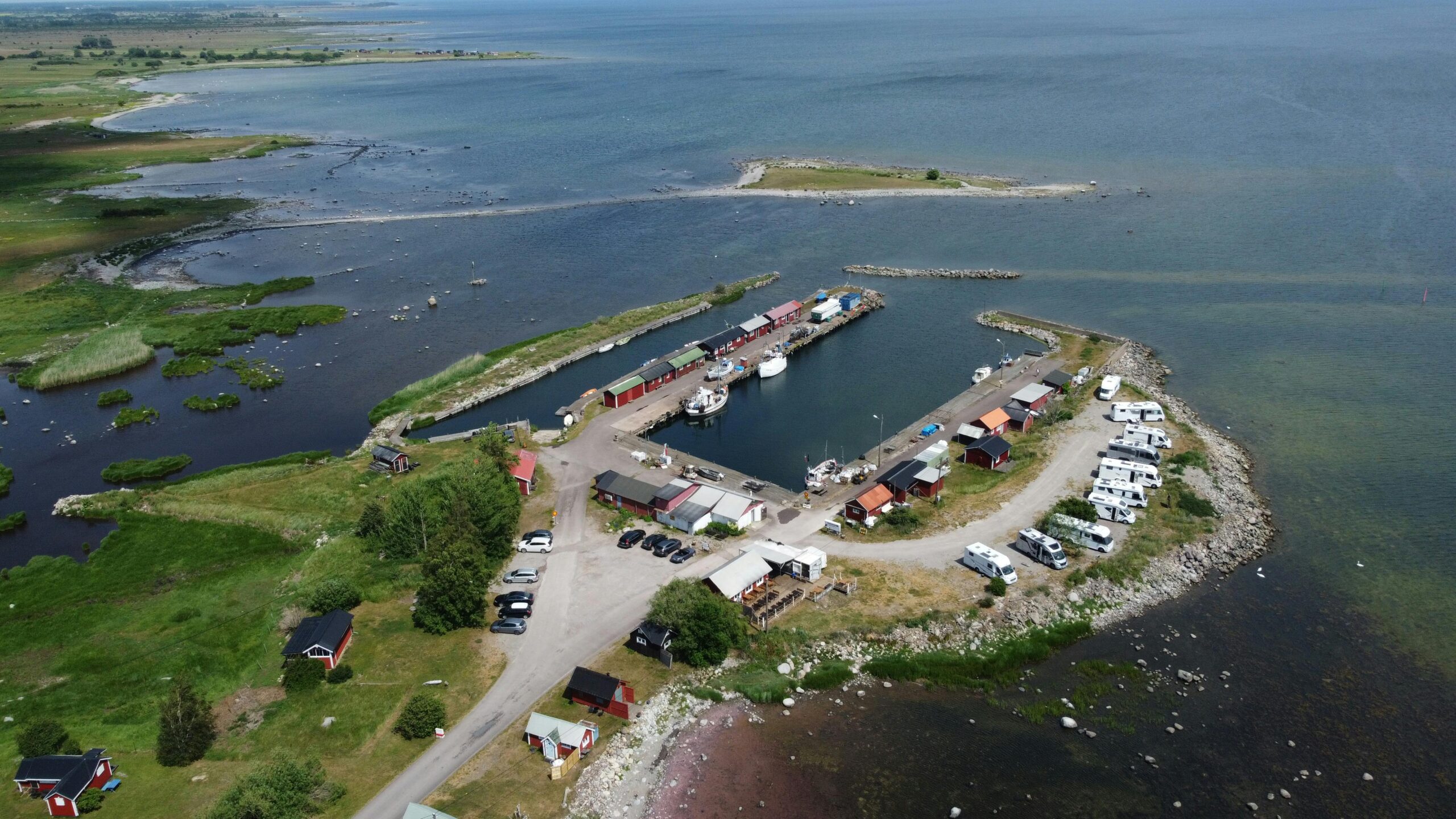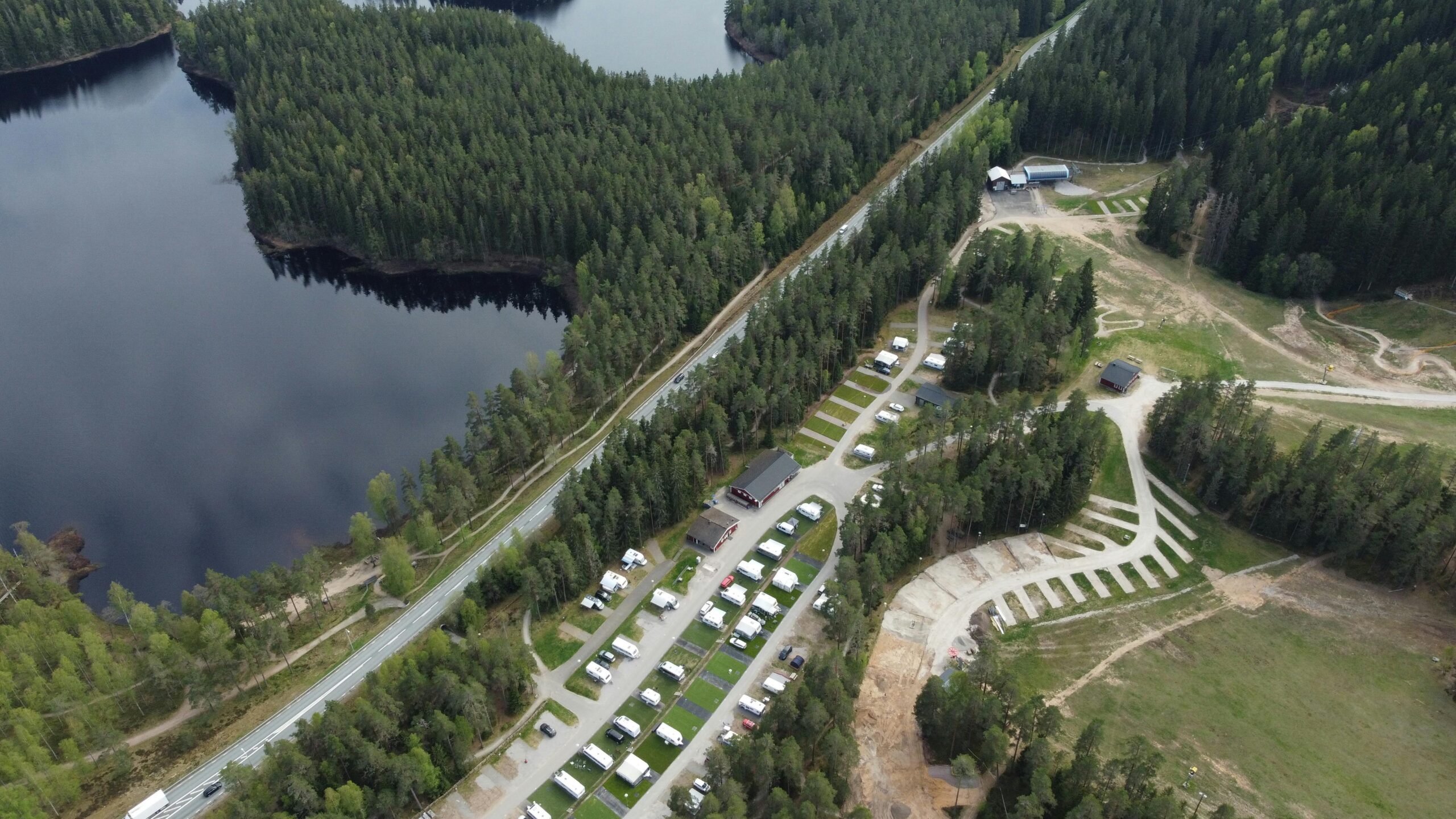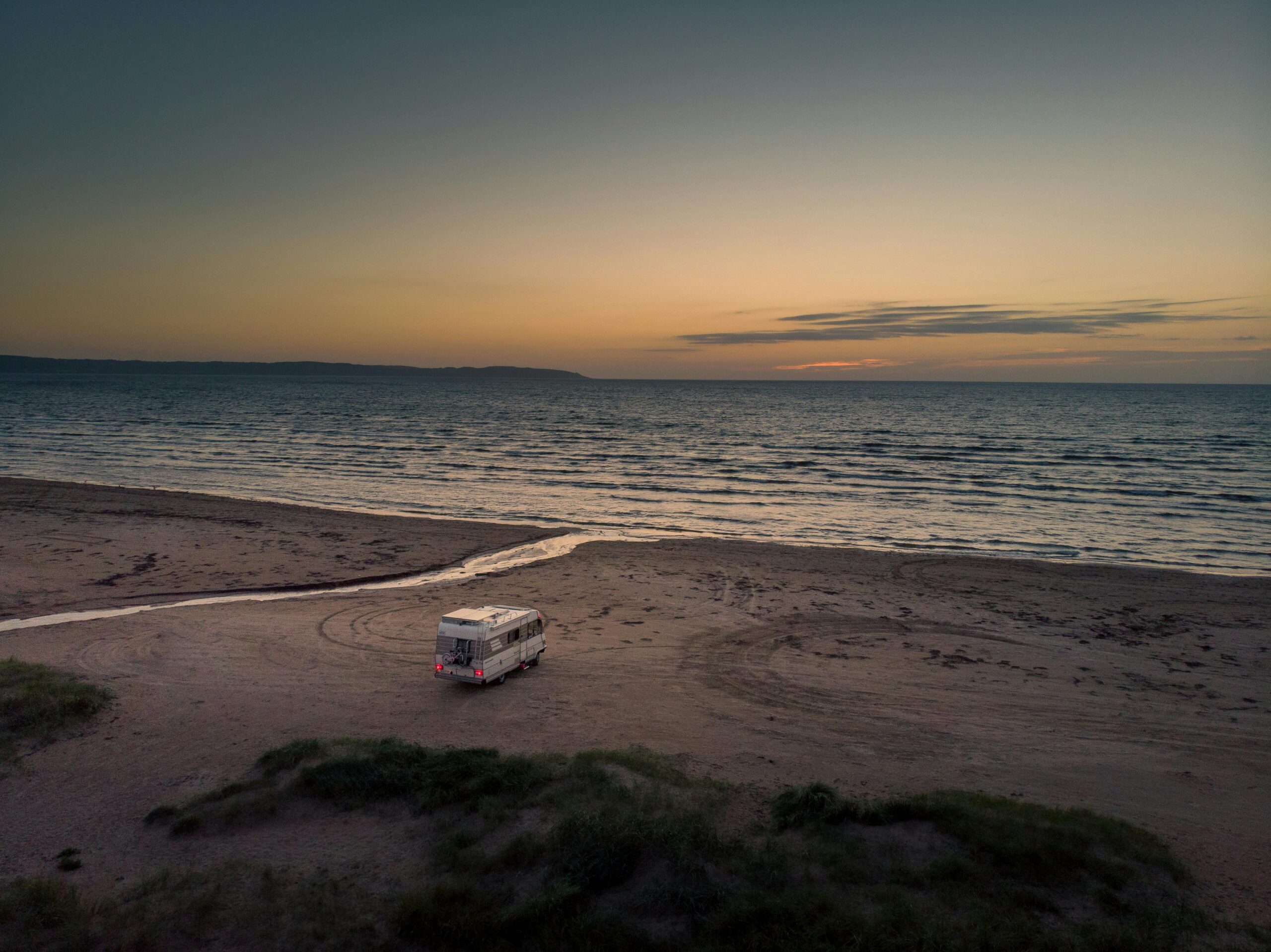
Yes, camping is not only possible but also a cherished part of Swedish culture, thanks to a unique legal principle called Allemansrätten, or “The Right of Public Access.”
Staying outside the stopovers
In Sweden, the ability to camp or park overnight in a motorhome outside of designated facilities is governed by a combination of the country’s unique Right of Public Access and specific traffic and off-road driving laws. While the Right of Public Access, known as “Allemansrätten,” gives everyone the freedom to roam and pitch a tent for a night or two on most unenclosed lands, it does not fully extend to motor vehicles like motorhomes. The most critical law to understand is the Off-Road Driving Act, which strictly prohibits driving or parking a motorized vehicle off-road. This means you cannot park on natural terrain such as forests, beaches, meadows, or lawns. The law’s purpose is to protect the fragile natural environment from damage. Therefore, with a motorhome, you must stick to established roads and paved or hard surfaces like asphalt and gravel that will not be harmed by your vehicle. When it comes to parking and staying overnight, different rules apply depending on the location. In general, a motorhome can be parked anywhere a regular car is allowed to park, as long as it fits within the designated parking space. However, this is considered parking, not camping. The key distinction is that while parked, you should not set up a campsite by putting out an awning, tables, or chairs. It is always important to check for any local signs, as municipalities or private landowners may have different regulations, which can include a total ban on overnight stays. On private roads, the owner has the right to determine whether motor vehicles are permitted. They can put up signs to ban motor traffic or certain types of vehicles, including motorhomes. If no such signs exist, you can park next to the road as long as you do not damage the ground or obstruct traffic. In protected areas like national parks and nature reserves, specific rules almost always apply. These areas often have strict regulations that limit or prohibit camping and overnight stays for motorhomes, so it is essential to check the local rules posted at the entrance or on the park’s website before your visit. In summary, the general rule is to park on solid, designated surfaces, adhere to parking time limits, and always show respect for the environment and landowners by not disturbing them and leaving no trace.
In Sweden, the general rule is that it is illegal to drive a motorized vehicle off-road, and this law applies to beaches. The Swedish Off-Road Driving Act, or Terrängkörningslagen, explicitly prohibits motor vehicles on unpaved natural ground, which includes beaches, forests, and fields. This is part of the country’s broader environmental protection efforts and is a key principle of the Right of Public Access, also known as Allemansrätten. The law is strict, and even landowners are not permitted to drive off-road on their own property. However, there are a few very specific and highly regulated exceptions to this rule. These exceptions are typically local regulations decided upon by individual municipalities, and they often apply to a very small, designated stretch of beach. Mellbystrand, for example, is one such location where a portion of the beach is a designated road, allowing cars and motorhomes to park and drive on the sand under specific conditions. To legally drive a motorhome on a beach in Sweden, you must be in one of these very limited, signed areas where the beach is formally considered a public road. Outside of these designated zones, it is strictly forbidden to drive on the sand, even for a short distance. Violating this law can lead to significant fines. It is essential to always check local regulations and signs, as the rules can vary greatly from one location to another. While the idea of driving and parking on a beach is appealing, the reality is that it is only permissible in a few isolated spots that are explicitly marked for that purpose

Inside the stopovers
In Sweden, you are welcome to park your motorhome at designated campsites and motorhome stopovers. When it comes to official camping locations, there are two primary options: campsites and motorhome stopovers. Campsites are traditional camping grounds that offer a full range of facilities such as electricity, water, showers, and toilets. They are a great choice for those seeking comfort and convenience, and they often require a fee. It is a good idea to book in advance, especially during the high season, as popular campsites can fill up quickly. Motorhome stopovers, known as “Ställplats” in Swedish, are simpler, designated parking spots specifically for motorhomes and campervans. These stopovers usually provide basic services like waste disposal, fresh water, and sometimes electricity, but they generally lack the extensive facilities of a full campsite. You typically pay a fee to park at a “Ställplats,” and they are ideal for short stays. It is important to note that when staying at these locations, you should not exhibit “camping” behavior, which includes things like putting out an awning or outdoor furniture. The vehicle should remain a parked vehicle. Rest areas along highways are another option for short overnight stays. You can generally park at these rest stops for up to 24 hours. They often have basic amenities like toilets and garbage bins, and some even provide facilities for emptying waste. However, they are intended for travelers to rest and are not considered camping sites. It is crucial to respect the rules and not cause a disturbance.
Dump waste water
As a motorhome traveler in Sweden, you can only dispose of your wastewater at designated service points. Improper disposal is strictly prohibited and can result in fines and environmental damage. The overarching rule is that you must not empty any waste water into the natural environment, including on roadsides or into water sources. You’ll find these service points at various locations throughout Sweden. The most common places are in the stopovers and campsites. Many of these spots provide essential services like fresh water refills and waste disposal for a fee, or for free if you are staying overnight. Some public service stations and rest areas along major highways also have facilities for emptying waste tanks. Swedish environmental law is quite strict about waste disposal to protect the country’s pristine nature. The fundamental principle is that all waste, including wastewater, must be handled in a way that minimizes harm to the environment. Municipalities are responsible for waste management and set local regulations, so it’s wise to check for local signs or information. Specifically, it is a legal requirement to use designated facilities for both greywater and blackwater. Blackwater from chemical toilets, in particular, requires specialized treatment due to the chemicals it contains. Never dispose of it in a regular sewer or septic tank unless explicitly permitted.

